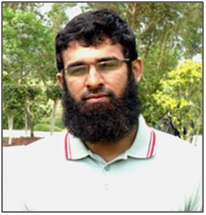ANTIFUNGAL, CYTOTOXIC AND PHYTOTOXICITY OF AERIAL PART OF RANUNCULUS MURICATUS
Keywords:
Ranunculus muricatus, biological screening, phytotoxicity, cytotoxicityAbstract
Objectives: The present research is preliminary biological screening of aerial plant of Ranunculus muricatus (Ranunculaceae). Dichloromethane and methanol extracts of the aerial plant were investigated for their antifungal, phytotoxic and cytotoxic activities.
Methods: Anti-fungal, cytotoxicity and phytotoxicity activities were performed by agar tube dilution assay, brine shrimp lethality bioassay and lemna bioassay respectively. Dichloromethane and methanolic extracts exhibited significant phytotoxicity against Lemna minor having Paraquat as standard drug and incubation condition (28±1ºC).
Results: None of extracts presented any significant cytotoxic activity having Imipenum and Etoposide as standard drug respectively. Both extract had non-significant antifungal activity but it has been noted that methanol extract showed 30% inhibition with linear growth at 70 mm, when compared with control; only against Microsporum canis. Ranunculus muricatus showed significant phytotoxicity.
Conclusion: The phytotoxicty assay is a valuable major screen for weedicide investigation. Additionally, modern studies are currently carried out to identify the allelopathic constituents by isolation, purification and structure elucidation to find out as effective herbicidal.

Peer Review History:
Article received on- 7 August; Revised 11 September; Accepted 9 October; Available online 15 November 2016
Academic Editor: Dr. Ali Abdullah Al-yahawi , Al-Razi university, Department of Pharmacy, Yemen, alyahawipharm@yahoo.com
, Al-Razi university, Department of Pharmacy, Yemen, alyahawipharm@yahoo.com
Reviewer(s) detail:
Dr. Awofisayo, O Abosede , University of Uyo, Nigeria, shalomgirl08@yahoo.com
, University of Uyo, Nigeria, shalomgirl08@yahoo.com
Prof. Dr. Ali Gamal Ahmed Al-kaf , Sana'a university, Yemen, alialkaf21@gmail.com
, Sana'a university, Yemen, alialkaf21@gmail.com
Downloads

Published
How to Cite
Issue
Section

This work is licensed under a Creative Commons Attribution-NonCommercial 4.0 International License.









 .
.